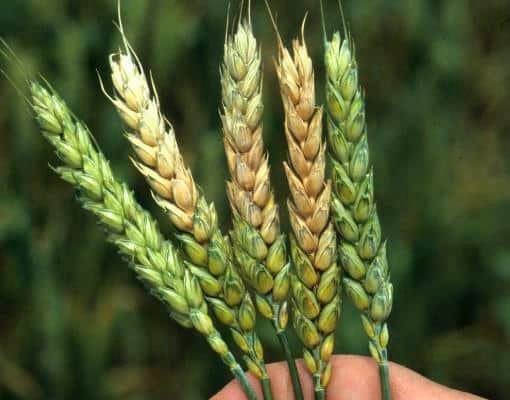The spread of wheat head blight in Pakistan is exacerbated by the country’s warm and humid climate, which provides an ideal environment for the fungus to grow and spread.

Wheat is a staple food crop that is consumed by millions of people around the world, including Pakistan. It is an important component of Pakistan’s agricultural sector, providing food and livelihood to a large population. But a variety of diseases limit successful wheat production in Pakistan, one of the most destructive and devastating of which is wheat head blight.
Head blight of wheat is a fungal disease that affects the head of the wheat plant, causing significant damage to the crop and reducing its yield. The organism that causes the disease is a fungus called Fusarium graminearum, which attacks the spikes of the wheat plant, causing them to become infected.
The infected spikes become discolored, deformed, and covered in fungal growth, reducing the number of kernels produced and affecting the quality of the grain.
The effects of wheat head blight are severe and can lead to significant reductions in wheat yield and quality. The disease can cause a loss of up to 50% of the crop, which can have a devastating impact on the livelihoods of farmers and the food security of millions of people in Pakistan.
With over 21 million hectares of land under wheat cultivation, wheat is the most significant staple food in Pakistan, according to the Food and Agriculture Organization of the United Nations (FAO). In Pakistan produced, 25.96 million tons of wheat in the year 2020. However, farmers and policymakers continue to have serious concerns about the threat of wheat head blight to the crop.
The spread of wheat head blight in Pakistan is exacerbated by the country’s warm and humid climate, which provides an ideal environment for the fungus to grow and spread. The disease can spread rapidly through the crop, causing widespread damage and reducing the overall yield.
To tackle the issue of wheat head blight, the government of Pakistan has implemented various measures, including the use of fungicides and crop rotation, to minimize the impact of the disease on wheat production.
The government has also been promoting the use of wheat varieties that are resistant to the fungus as well as good agricultural practices to minimize the spread of the disease.
However, these efforts have not been enough to completely eradicate the disease. The use of fungicides is expensive and can have a negative impact on the environment, and the resistant wheat varieties may not be available to all farmers due to their cost. Additionally, the resistance of the wheat varieties to the disease can decrease over time, making them less effective in controlling the spread of the disease.
The threat of wheat head blight to wheat production in Pakistan has a significant impact on the country’s economy and food security. The disease affects not only the farmers who depend on the crop for their livelihoods but also the millions of people who rely on wheat as a staple food.
In conclusion, wheat head blight is a major threat to wheat production in Pakistan, causing significant damage to the crop and reducing its yield. The disease is spreading rapidly due to the country’s warm and humid climate and can have a devastating impact on the livelihoods of farmers and the food security of millions of people.
The government of Pakistan is implementing various measures to control the spread of the disease, but more needs to be done to completely eradicate it. The government and international organizations need to work together to find sustainable and cost-effective solutions to tackle this problem and ensure the long-term sustainability of wheat production in Pakistan.